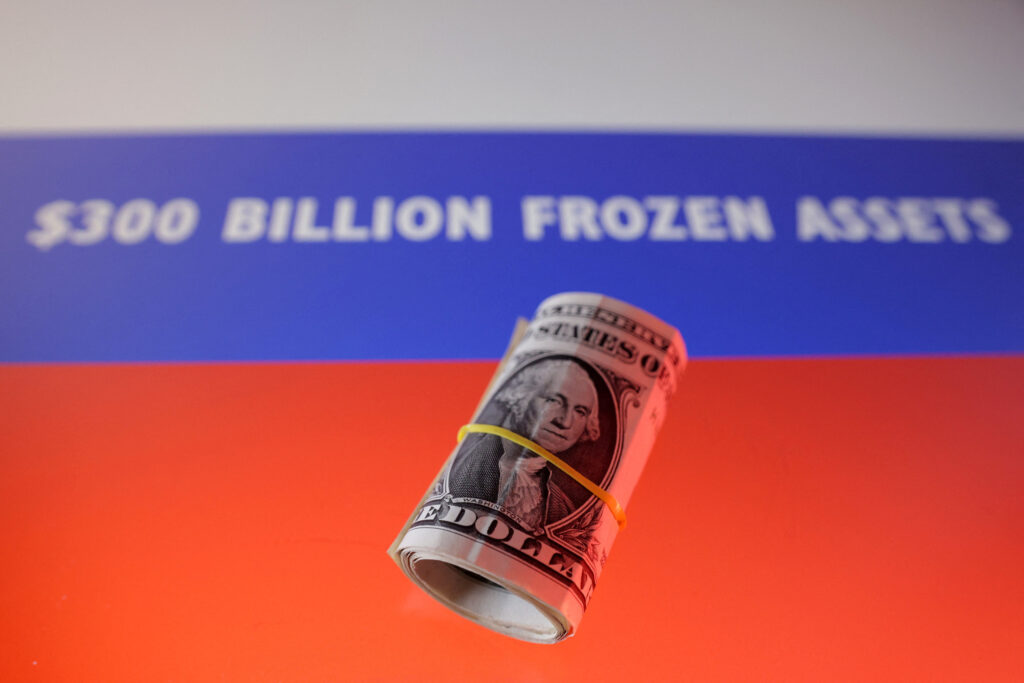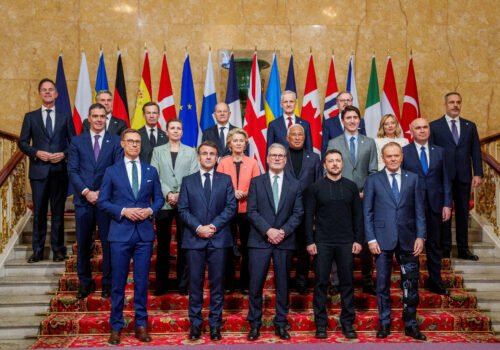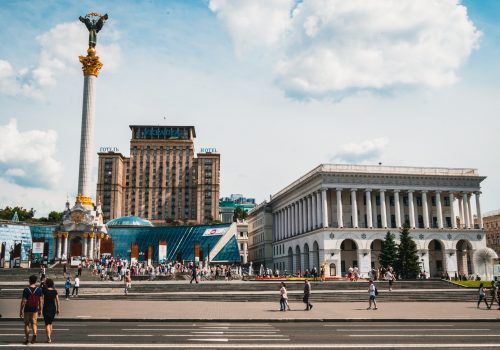It was always likely that the fate of the $300 billion in frozen reserves of Russia’s Central Bank would become a key issue in negotiations over Ukraine’s future. With the new White House administration initiating fresh diplomatic efforts, these assets have now emerged as a potential bargaining chip in the broader push for a settlement.
Although the details of the negotiation process that began recently in Riyadh remain opaque, reports are already circulating about various potential formulas for using these funds. According to insiders, one proposal suggests allocating a portion of the reserves to support reconstruction in the approximately one-fifth of Ukrainian territory currently occupied by Russian forces. In practice, that would mean the return of the frozen assets to Russia.
Kyiv would strongly oppose any such move, as it would be seen as contradicting both Ukraine’s national interests and the interests of the victims of Russian aggression. This underlines the high stakes as negotiations evolve and the opposing sides debate the fate of Russia’s frozen assets.
Since February 24, 2022, reserves of the Russian Central Bank have represented the largest frozen pool of Russian sovereign assets. Kyiv has consistently called for their full transfer to fund the Ukrainian war effort and compensate for war damage inflicted by Russia. G7 countries have repeatedly reaffirmed their stance that the frozen assets will remain immobilized until Russia pays for the damage it has caused in Ukraine.
This position has effectively placed responsibility on Ukraine and Russia to negotiate a political settlement including war reparations. Over the past three years, significant work has been undertaken to elaborate legal grounds for the confiscation of the frozen Russian assets in Ukraine’s favor, but no decisive action has been taken to seize them outright.
Instead, as a temporary measure, Ukraine has received interest accrued on these funds, which were placed in deposit accounts in 2024. Additionally, G7 leaders agreed to provide a $50 billion loan to be repaid in the coming years using proceeds from the frozen reserves. This arrangement represents a substantial achievement. It has also fueled speculation that the Russian assets will remain untouched until the loan is fully repaid, which could take 10 to 15 years.
Stay updated
As the world watches the Russian invasion of Ukraine unfold, UkraineAlert delivers the best Atlantic Council expert insight and analysis on Ukraine twice a week directly to your inbox.
The start of peace talks in Saudi Arabia, spearheaded by the United States, has shifted the political calculus surrounding the use of the frozen Russian funds. Potential proposals to channel them into Ukraine’s reconstruction, including reconstruction projects in Russian-occupied territories, would mark a striking departure from previous policy. While this would no doubt be framed as a pragmatic step toward resolving the conflict, many would see it as a major concession to Moscow.
At first glance, this approach may appear designed to set a balance between competing interests. In reality, it risks undermining the very principles on which the international response to Russia’s aggression has been built.
Since 2022, there has been broad consensus that Russia, as the aggressor state, bears full responsibility for the consequences of the war, including the obligation to compensate for all damages, irrespective of the circumstances under which they occurred. This has been reaffirmed in a UN General Assembly resolution, one of Ukraine’s key diplomatic achievements at the United Nations.
Any compromise that allows Russia access to its frozen reserves, even indirectly, would set a dangerous precedent for the division of responsibility over war-related damages. While some might argue that the money ultimately belongs to Russia and that partial access does not amount to a strategic loss for Ukraine, this perspective ignores a fundamental reality: These frozen assets were supposed to serve as leverage to compel Russia to accept its legal obligations, including reparations. Allowing Moscow to regain control over even a fraction of the frozen assets would weaken that leverage and allow the aggressor to benefit at the expense of its victims.
Eurasia Center events

The core issue remains clear. Any model for unlocking Russian sovereign assets must prioritize justice for Ukraine and the victims of Russian aggression. Allocating these funds to be used by the aggressor state without a formal reparations agreement would contradict the principles of accountability.
Since May 2022, Ukraine has consistently advocated for the creation of an international compensation mechanism based on the vision that victims of aggression must be the primary beneficiaries. The fate of the frozen Russian $300 billion has always been at the center of this process, as these funds were considered the main source for financing reparations. Under a framework led by the Council of Europe and supported by a coalition of international partners including the United States, a Compensation Fund could serve as the primary instrument for distributing these assets to those who have suffered direct harm from Russia’s aggression.
While the mechanism requires further refinement, supporters believe this format is the best path toward ensuring meaningful redress. The recently established Register of Damage for Ukraine, which is tasked with registering all eligible claims to be paid out through a Compensation Fund, is an initial step in this direction, demonstrating a tangible commitment to prioritizing victim compensation.
Transferring Russia’s frozen reserves to a future Compensation Fund appears the most logical and legally sound course of action. Moreover, the European Union, which administers $210 billion of the $300 billion in frozen Russian Central Bank reserves, reportedly backs the move. Without this transfer of assets, the entire idea of a reparations mechanism for Ukraine would be undermined.
While the operational details of any future decisions can be refined through multilateral negotiations with the participation of Ukraine and the EU, the guiding principles appear clear. These should include the use of frozen Russian assets to serve the interests of Ukraine as the victim of aggression. The primary purpose of these funds should be direct compensation for war damages suffered by Ukrainian individuals, businesses, and institutions. Meanwhile, any decision on their use must be grounded in principles of justice, ensuring that responsibility for war-related damages is not shifted onto Ukraine, and that a victim-centered approach remains at the core of the process.
Ivan Horodyskyy is a nonresident senior fellow with the Atlantic Council’s Strategic Litigation Project and director of the Dnistryanskyi Center for Politics and Law.
Further reading
The views expressed in UkraineAlert are solely those of the authors and do not necessarily reflect the views of the Atlantic Council, its staff, or its supporters.

The Eurasia Center’s mission is to enhance transatlantic cooperation in promoting stability, democratic values and prosperity in Eurasia, from Eastern Europe and Turkey in the West to the Caucasus, Russia and Central Asia in the East.
Follow us on social media
and support our work
Image: U.S. dollar banknotes and Russian flag with words "$300 billion frozen assets" are seen in this illustration taken, February 21, 2025. (REUTERS/Dado Ruvic/Illustration)




